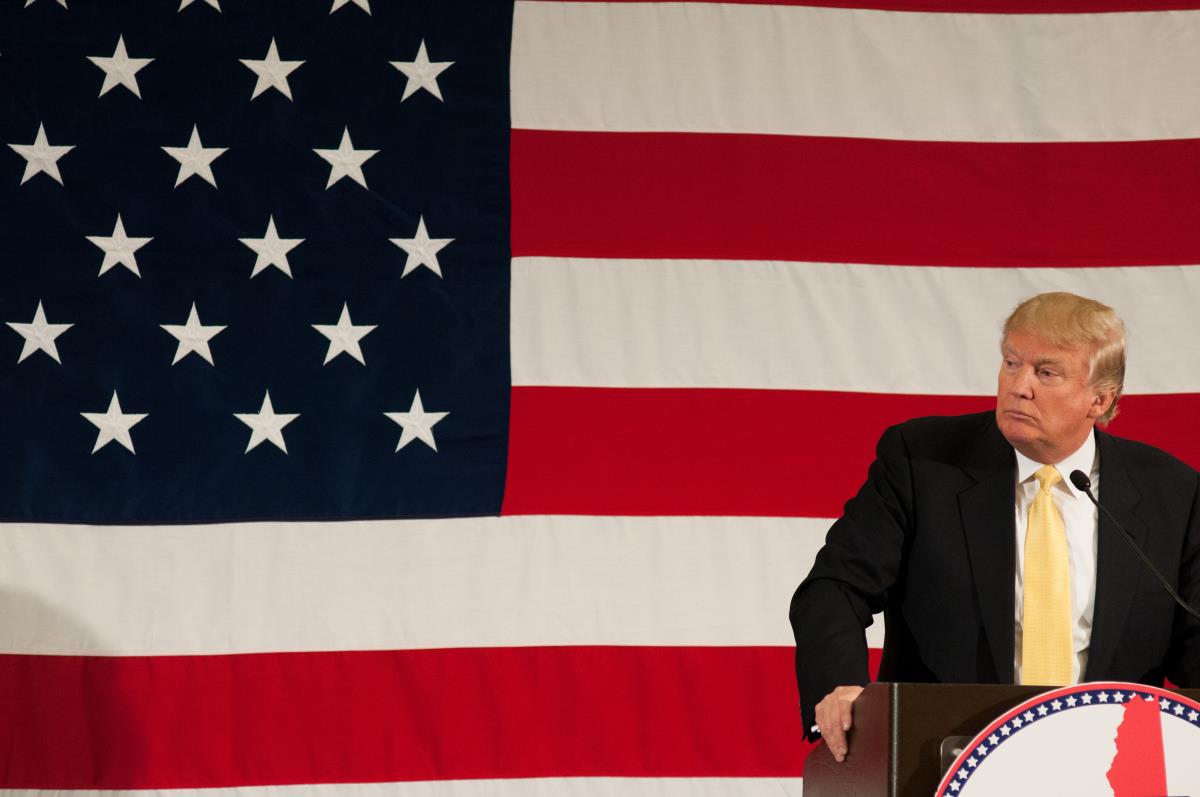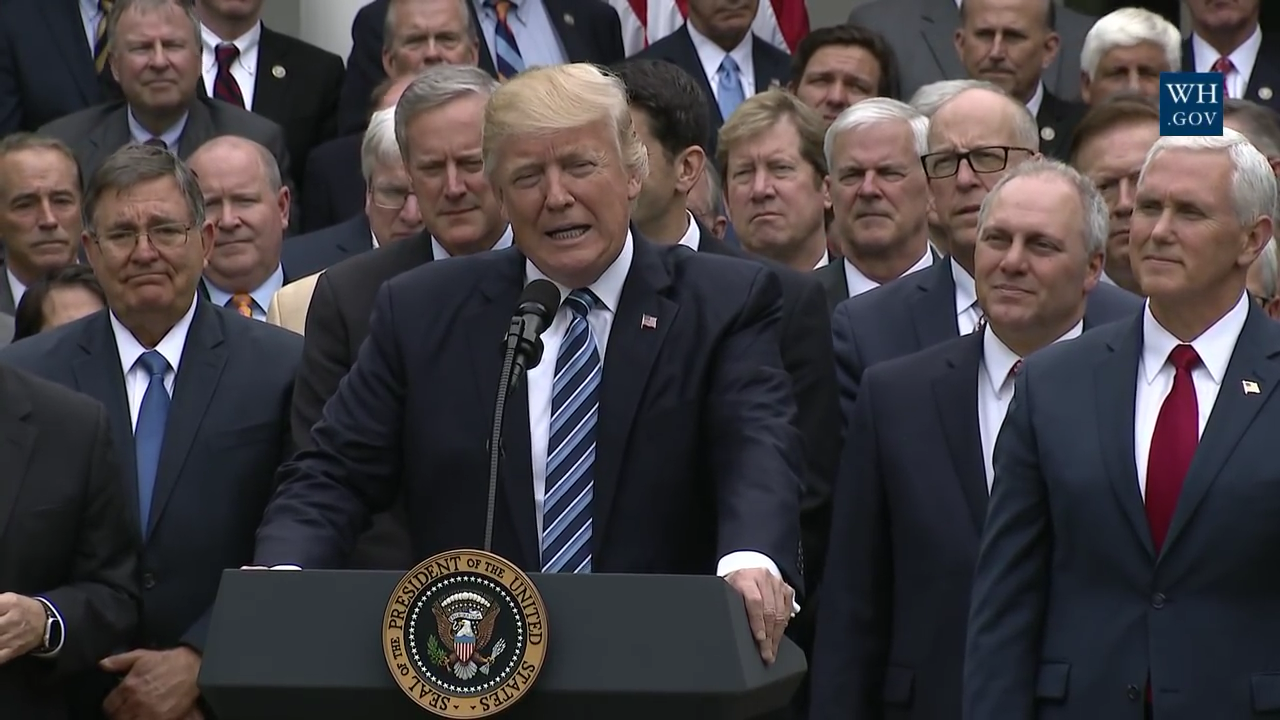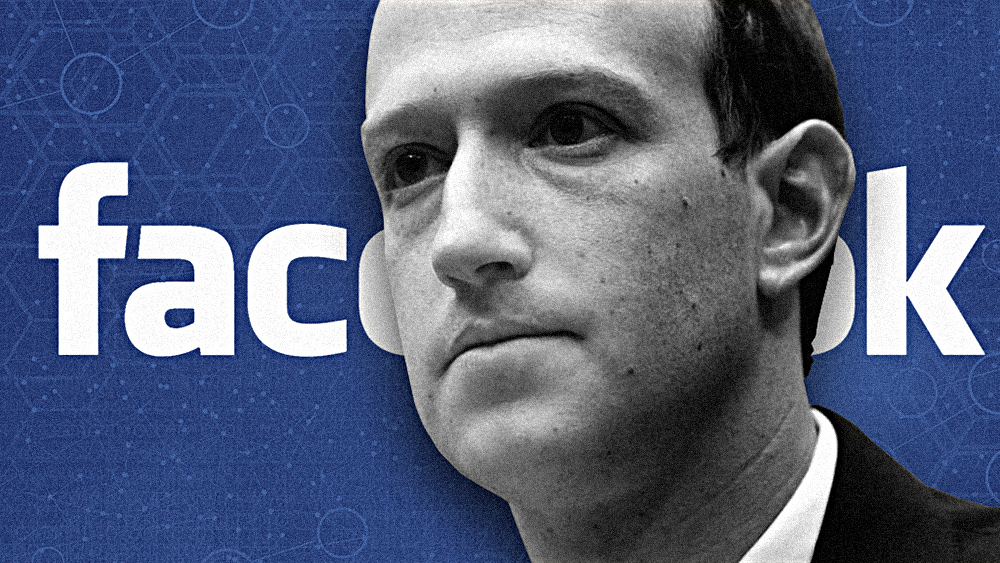The Democrats’ sinister strategy to win in 2020
06/18/2019 / By News Editors

The wildest single phenomenon as we come close to a clearer picture of the Democratic Party’s election strategy for 2020, is that there really isn’t a single candidate that the party has been able to coalesce around. And without this, it would appear difficult to see whether the Democrats intend to focus their strategy on flipping the Rust Belt or the Sun Belt states blue. The truth is that this really isn’t their strategy at all. It’s their strategy to talk about these strategies. But what they will rely on instead is something far more dark and sinister – something we’ve already seen and felt the ramifications of, and something every vigilant citizen needs to focus their primary concerns on.
(Article by Joaquin Flores republished from Strategic-Culture.org)
What strategy won’t work for Democrats? The one they’ve been trying since Trump won.
Most of the chatter we’ve seen so far tends to focus on that question, Rust Belt or Sun Belt (or both), and then which set of policies should the party focus on, and then naturally who will be the candidate to deliver the victory on that platform.
It’s well understood how misleading it is to look at the wide margin at the level of the Electoral College that saw Trump’s sweep. In the real battle-ground states, his victory was in some cases incredibly slim. If three or four of those states had gone for Clinton, then we’d be in a very different electoral reality today. So it goes without saying that Democrats think that they only need to keep all the states they won in 2016, and ‘simply’ (oh, it will not be simple!) flip three or four swing states.
This is very ‘by the books’ and old-model thinking however, and it’s precisely this lack of imagination that saw Democrats lose in 2016. They ran a top-down campaign, not realizing that we live in a post-modern electoral paradigm, where voters are less motivated in ways that can even be broken down by states, state politics, or state interests in the old sense. Yes, mid-term elections tell us something, but this translates less and less so to national politics. We are moving away from the swing-state, and towards the swing-individual.
The internet, at the risk of being extraordinarily cliché, keeps changing the rules. But it’s true. While state secession sentiments actually grow, politics itself has become increasingly national-oriented and also broader in scope – that is to say, paradigmatic.
Trump’s people brilliantly understood that something more was needed in addition to the standard stitching together the standard Republican big tent coalition of anti-Coastal fly-over country America, Christian Zionists and evangelicals, with small-government, low tax business conservatives.
They understood that there had to be a bigger story, a grand narrative, an entire paradigm. Something that would penetrate Reddit and 4Chan, and go full-on memetic. Tropes like the ‘Rising Chinese Menace’, ‘Pizza Gate’, the unappreciated and ‘politically incorrect White Man’, and even some Ron Paul related tropes related to currency ‘metal heads’ and the Fed – these came together to give his campaign some meaning, and meaning is what motivates the grass roots in the digital era.
Not ‘policies’ in the mundane think-tank, policy wonk sense of the term. No, not at all. If Occupy Wall Street taught us anything, is that what has radicalized people is not this or that policy – even though polling people by policy will naturally (obviously) produce policy-edible results – but instead people are radicalized by the much larger questions of our time.
And Democrats keep referring to these, because as an institutional machine, this is what it’s built on, this is the essence of its bureaucratic inertia, and where the relationships exist.
Democrats will have to use the institutions and machines they have built, not the ones they should have been building and haven’t.
What strategy will Democrats try?
In contrast to this paradigmatic approach which is required to win, Democrats seem to be stuck in trying to simulate grass roots, through the older model of ‘grass roots organizations’, a series of endorsements by way of Astro-turfing, and relying on the mobilization of students at the orders of professors and teachers, and of organized labor by order of the shop steward and internal organizer, following the SEIU model that saw Obama elected in swing-states states like Colorado.
But as Democrats have switched posture to being a pro-war party, they are seriously going to be lacking in the activism of the anti-war constituency, a constituency which may indeed view Trump at least neutrally. And trying to switch the anti-war elements of the most progressive, leftist wing of the party and the ‘left of the party adjacent’, into a pro-war party of xenophobic pogromist, neo-McCarthyite Russophobic minions, would seem to be a Herculean task. That is, of course, if those elements still have internet access. And herein lies the rub.
Democrats are going to have to rely on the most sinister and anti-democratic strategy, one that threatens democracy itself
The very sick and sad reality is that Democrats are working directly with the internet tech and platform giants, Google-Adsense, YouTube, Twitter, Facebook, and Amazon, to broaden the scope of censorship, to shut down websites, to deplatform, demonetize, and derank thousands of YouTube vloggers, even big ones, and shadow-ban countless tens, even hundreds of thousands more.
They are creating an ever-more walled garden, a fake internet, the very thing American Sinophones have been accusing the Chinese of doing. And strangely, the average Chinese appears to be more plugged into the inner-workings of American life and politics than the other way around – so much for censorship.
This is the single-most winning component of their strategy. Democrats have an institutional machine that cannot win using the internet as it had evolved until around 2016 – the war now has been a war against the internet and its denizens themselves, against online activism which challenges the status quo – even if its anti-Trump on issues of war and imperialism, since the Democrats themselves promise at least as much if not more.
If the Democrats cannot beat the internet, they will destroy it. And destroying it they have been doing.
While censorship strategy this is the main idea for their campaign – to silence the genuine progressives and socialists in their own party, and to double-down on censoring the broadly paradigmatic elements of Trump’s organic and grass-roots base – they will need to plaster on some kind of plausible pseudo-strategy to get them from here to there. And as we have seen, there isn’t really a candidate. Democrats are lacking in anyone that has anything to say, because the Democrats aren’t looking forward, they are trying to turn the clock backwards to reproduce a political geography that existed twelve years ago as Obama-esque tropes gained ascendency. To do this means to erase the real-existing internet, under the rubric of a war against ‘fake news’, and ‘alternate facts’. Only here can they win, using a victory by the numbers, not winning the battle of ideas.
This time around, their push-polling and fake-polling might work. This is the plan that aims to get their candidate to win by claiming that their candidate is winning, in all the news online or TV that you’d ever have a chance to see. They thereby win low-cognitive undecideds who want to vote for the projected winner, for low-cognitive and base-emotional reasons at the level of the amygdala, as was their plan in 2016. This plan would have worked except for the digital democracy of paradigmatic proportions, the one that Trump so masterfully mobilized, and so it is clear and obvious that Democrats aim to win by erasing digital freedoms, since the 1st amendment questions haven’t been properly sorted in the digital era. The big tech and platform firms are private agencies, have their own bizarre and discriminatory TOS’s, and have been censoring and deplatforming anyone who sniffs of paradigm.
Who are Democrats pushing on the public as the potentials?
Biden, Harris, Sanders Booker, O’Rourke, Warren, even Yang to some extent. Surely, but they don’t give us a whole lot. Besides Yang, what do any of these candidates really stand for? Like Yang, all of these candidates appear to tend to focus on single-issue policy questions; Warren with student loan debt; Harris isn’t so much an issue candidate as she is a symbolic one; and with the exception of Yang, no-one is broadly paradigmatic.
O’Rourke has charisma, and has some of the appeal of a Kennedy meets Jimmy Stewart. This Jimmy Stewart vibe carries with it both pop-psychologist and YouTube celebrity Jordan Peterson, along with elements of Ron Paul vibes. On the subconscious level, telegraphing and channeling this tremendously powerful essence has carried O’Rourke this far. Added is O’Rourke’s relative youth, indie rock scene credentials, and some resonance with the Latino community – that’s all he really has to stand on. Like the forgettable Tim what’s-his-name-? Kaine, these are white men who nominally stand for the Latino community. O’Rourke goes by Beto, like Kaine speaks Spanish.
Besides the actual strategy of relying on internet censorship, the nominal, plastered, plausible strategy is to run everyone at once, until the very end. There isn’t a single candidate because democrats in fact do not have a candidate to run. They have a censorship plan, and then simply run half a dozen people simultaneously and work their virtual supporters up into some ‘anyone but Trump’ frenzy, with each candidate taking the historic vow to officially throw their support and their supporters behind the candidate that wins the DNC primaries.
This is a very interesting approach strategically, because historically we’d find coalescence around a sense of the general electoral paradigm we are in first – the real set of issues at play – and then narrow down the candidates based on who best serves, or reflects, that paradigm in terms of electability, charisma, and ability to deploy a field campaign, especially in the swing states. That was the case for Obama in 2008.
No more Obama
For Obama, coming off of eight years of Bush and the destruction of the neoconservative brand, it was a simple strategy that worked in the targeted states. The anti-war demographic while not huge in their own, are among the most active campaigners who are absolutely fine with adjusting their talking points to reach voters on the ideas and policies that matter to them most, anything to unseat the ‘war monger in chief, Bush’. The rise of the national security state, Homeland Security, the wars in the middle-east, Guantanamo Bay and torture, extraordinary rendition, warrantless tapping and spying on Americans at home – these all had the civil libertarians against Bush as well.
Necessary for Obama’s victory also was a very strong appeal to the progressive left, still based in the last generation’s relationship to symbolic politics.
To be clear, symbolic politics of this type no longer motivates new voters, who are economically and culturally at odds with the present system, and aren’t looking for a symbolic politics based in abstract progressivism, if it doesn’t reflect in their own pocket-books and employment opportunities. That is, after all, one of the biggest reasons that Trump took the swing states in 2016. The symbolic politics that elected Obama won’t work for Democrats again, even if they tap the double-minority vein of Harris. The reality is that even Democrat voters are no longer interested in a candidate to best represent or serve the underserved or underrepresented if those are conceived of as some ‘urban other’. The reality is that the middle-class progressive base of Democrat activism really no long exists. It began to evaporate under Obama’s policies themselves, in 2008 with quantitative easing, when the too big to fail banks were bailed out, instead of Americans themselves.
Democrat strategy unlocked – Silence the Public, pretend Clinton isn’t in charge, and run half a dozen candidates representing some puerile pastiche of demography, until the very end.
While at first glance this may seem to be reflective of an incoherent strategy, we need to step back and see how there is indeed a certain logic at play here. Censorship will have a huge impact on this election, and all politics moving forward.
Not having a single candidate to focus on, that is, to draw fire on, isn’t the same thing as not having a single strategy. Single candidates and single strategies are not the same thing, not in the DNC, which is still clearly under a unified command structure under H.R Clinton. Yes indeed.
It’s clear to insiders and anyone nominally looking at the facts on paper that the DNC is still a Clinton monopoly, there was at least some thinking, at least for some time, that the technocratic and professional elements of the party who actually want to win the race, were having some significant pull. We saw signs of this in early 2017 when Tom Perez came into to chair the DNC, a former Obama Secretary of Labor in the second term, signaling at least symbolically that team blue was breaking out of the Clinton club – at least that which was dedicated to the cult of Clinton.
But to believe this, one would have to believe the old insider story going back to 2007 that Clinton and Obama represent different power factions within the party. But given that, besides the necessary myths and promises required to get elected, the real point of Democratic Party governance relates to the international questions. And H.R Clinton’s role as Secretary of State saw the significant transatlantic networking and alliances necessary to pull off the Arab Spring and the Ukrainian Maidan. And so even here it’s wildly questionable that Obama was much more than a Clinton faction ally, at best.
The Democrats’ real problem here and now is that Clinton is widely despised by real voters, especially the kinds of voters that the party needs to win in the old and emergent swing states alike. That means that the party has to give off some essence, some inkling, some notion that the DNC and the party itself isn’t still run by Clinton.
And this will be very hard to do, given that it is. The way that Sanders entirely buckled under the weight of the DNC’s corruption and gaming the delegate process during the nomination process, only served to induct a new generation of progressive voters – the real activists of the party generally tied to organized labor and astro-turf community organizations on the NGO model – into the ‘anyone but Hillary’ camp.
That’s to say that the party strategy to win the White House in 2020 can’t be based around some focus on Hillary Clinton in any way. This is the real kicker. What we’ve seen until recently to be frank is, rather than a positive program moving forward, is instead a never ending series of accusations and apologia – in the non-remorseful, Greek sense of the word – on how and why Clinton was robbed of the election. This in turn, however, has had profound effects on censorship and the erosion of digital democracy.
More recently we’ve seen some major concessions from Democratic Party leaders in their talking points around some of the culture-war issues, and related to that, immigration policy. Democrats, in tandem with their transatlantic neoliberal partners in the EU, especially in the case of France with Macron, have begun to push in a populist direction on immigration. In plain terms, Democrats hope to win over the ‘moderate’ cross section of the ‘build the wall’ crowd, at least in swing states where that subject ranks in the top five but under the top three main concerns.
But such concessions may act, in reality, not as game-changers but instead as plausible-deniability insurance, that they won voters this way, and not through a possibly illegal collaboration and collusion with the Silicon Valley tech and platform giants.
The initial ‘excitement’, scare quotes intentional, around Joe Biden’s announcement in April that he would be in the race, has steadily deflated ever since, by and by a startling rate.
When we look at the overall picture, it is difficult to see Biden being the candidate. But given that Biden has his own ‘grab em by the p%$$#’ reputation, is both white and a male, and has a masculine-aggressive personality component – important demographic cross-sections for Trump – these may all indeed, in the end, serve successfully as cover for the Democrats plan to steal this election through censorship.
Read more at: Strategic-Culture.org
Tagged Under: 2020, bias, Censorship, Cheating, democrats, election fraud, elections, internet, left cult, politics, President Trump, Republicans, sinister, Tyranny, vote fraud
RECENT NEWS & ARTICLES
COPYRIGHT © 2018 TECHGIANTS.NEWS
All content posted on this site is protected under Free Speech. TechGiants.news is not responsible for content written by contributing authors. The information on this site is provided for educational and entertainment purposes only. It is not intended as a substitute for professional advice of any kind. TechGiants.news assumes no responsibility for the use or misuse of this material. All trademarks, registered trademarks and service marks mentioned on this site are the property of their respective owners.

















